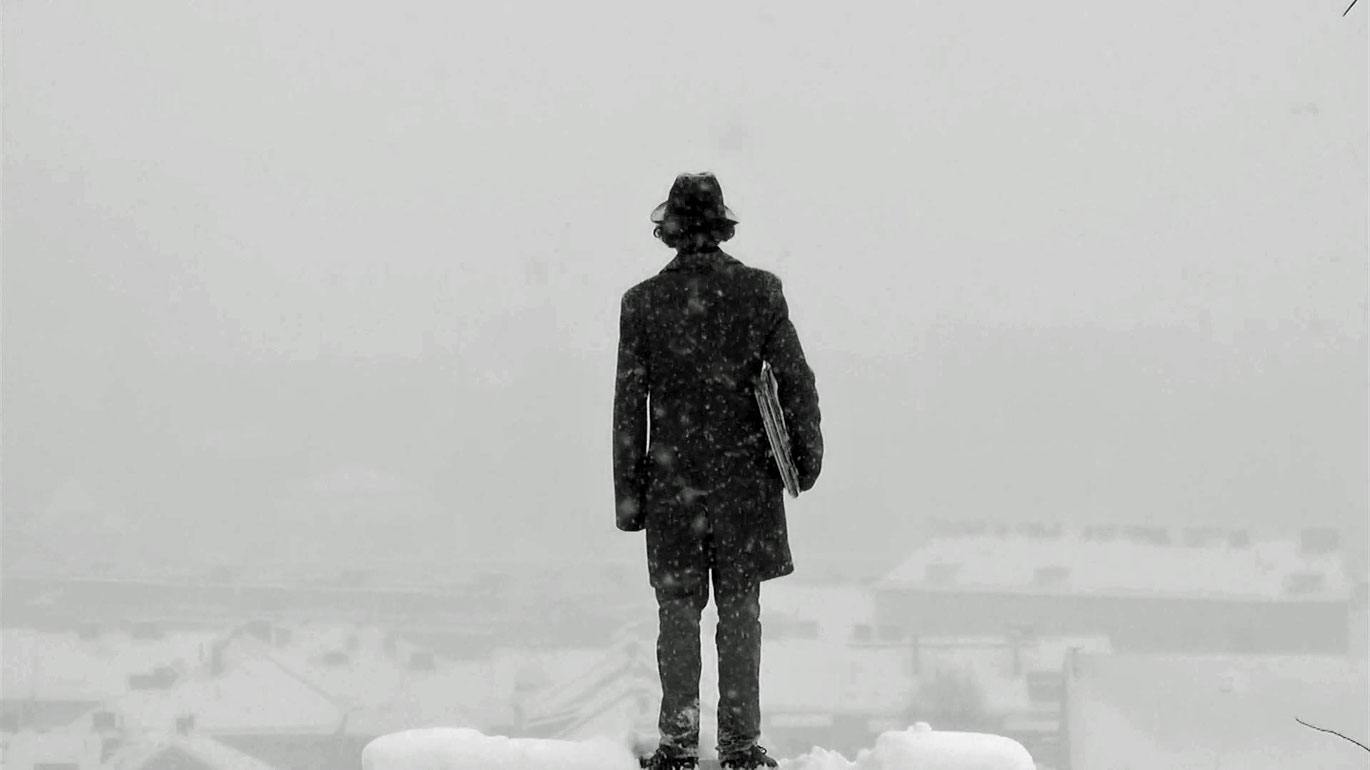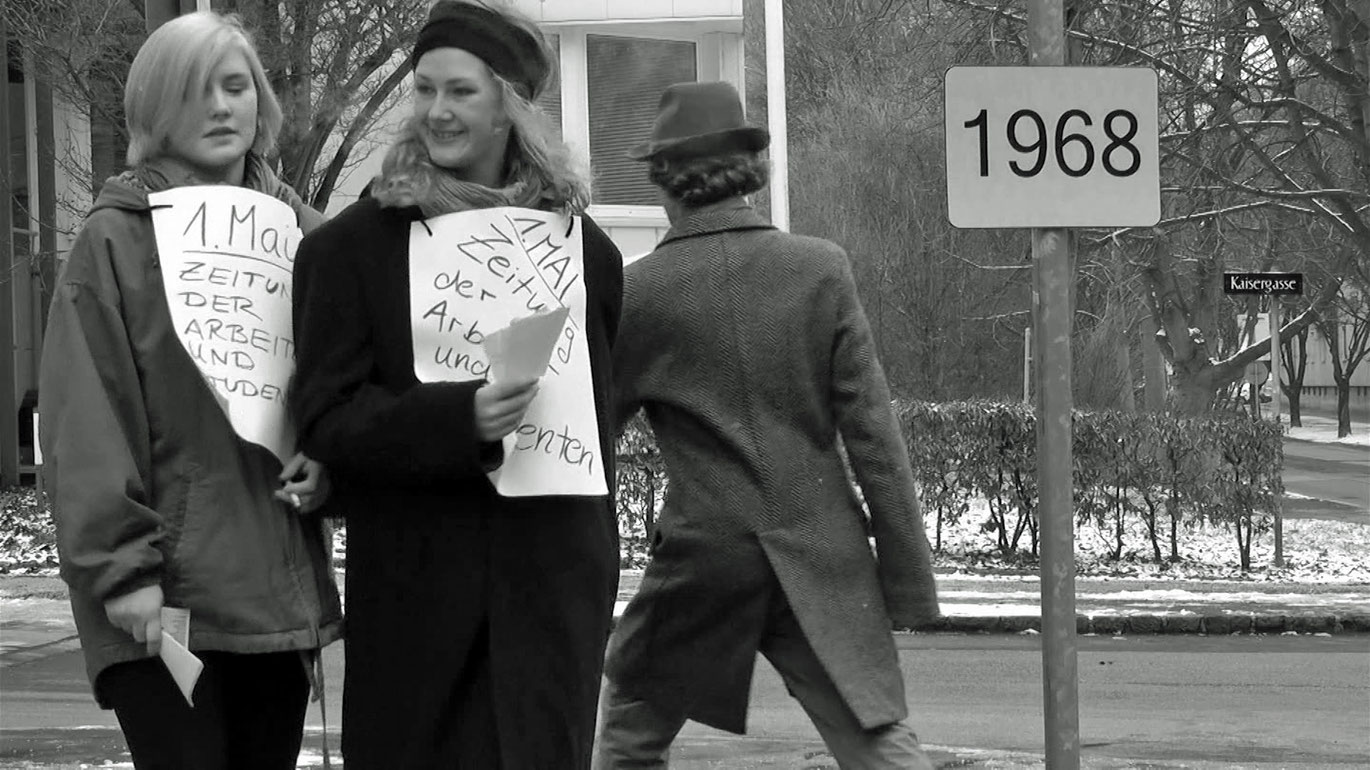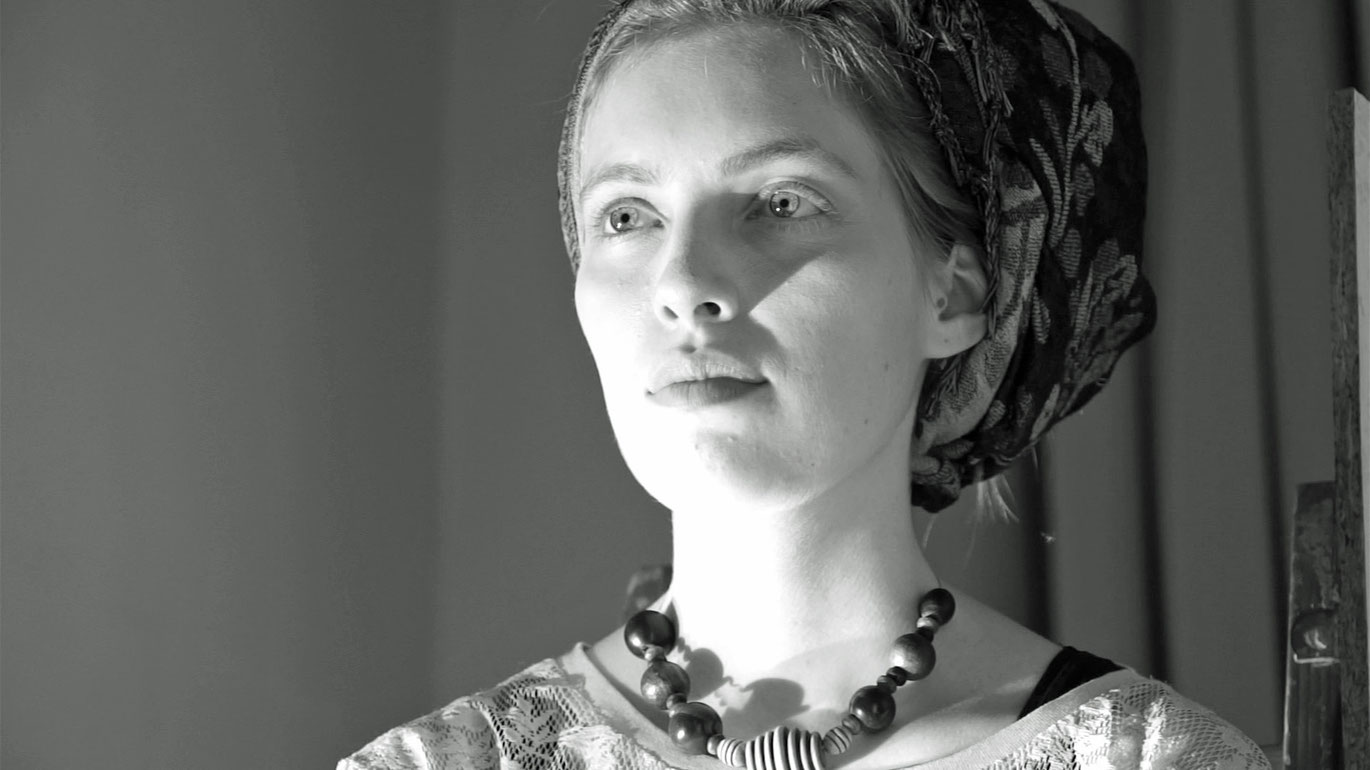No word about Ilse
No word about Ilse is a film full of language. A woman’s voice and a man’s voice speak alternately from off screen, in parallel narration. They are talking about Ilse Schneider-Lengyel; the first meeting of the Gruppe 47 was held at her house on Bannwaldsee in Allgäu. The thereby also talk about post-war Germany’s literary and intellectual elite, who would dissolve in 1967 (in due time before the outbreak of social unrest in 1968).
The image is black-and-white, remains in the past. He—the man, who from a distance is reminiscent of Peter Handke (without glasses)—moves through the wintry landscape somewhat like a character from a slapstick film. It is cold; the view is displaced, gloomy, fog on snow. She—the woman—sits nearly emotionlessly, motionless on a ladder, and is—doubly—portrayed: painted, and talked about. No word about Ilse gathers all of the basic data, cites all the facts that are to be known. But does it thereby exhaust the image? Things you are meant to remain silent about are usually what you want to talk about most.
That is how she went down in history, as the first hostess of the Gruppe 47. That is how she considered herself, “as an exception in the male-dominated postwar literature.” The film makes that clear and turns the hierarchy around: Ilse had her own history and earned her own merit. Ilse, too, is full of legends. With her language, strongly influenced by Surrealism, she didn’t really fit into the frame of the group, anyway. With the austerity of its discourse, the group no longer fit in the frame of the revolution. The things you cannot speak about, you have to remain silent on. Handke goes to Princeton and berates his audience. Ilse’s trail is lost in the excitement of the events. When she died in 1972, it is found again. The past catches up with us; history is peculiar. The dialectic of enlightenment hits him—the man—on the back of his head.
(Sylvia Szely)
Translation: Lisa Rosenblatt
Von Ilse ganz zu schweigen
2014
Austria
8 min



